Roof damage from weather, age, or poor installation requires timely repair and regular maintenance for longevity. Start with visual inspections, using tools like infrared cameras, to identify issues like leaks, missing shingles, or structural damage. Homeowners can handle minor repairs like replacing shingles and sealing leaks, but complex problems like water damage or severe sagging need professional roofing experts. Different roof materials have varying lifespans; asphalt (20-30 years) is common, while clay tiles (up to 50 years) offer durability and metal roofs (over 50 years) resist precipitation. Regular maintenance includes annual inspections, gutter cleaning, and sealing vents to protect against damage. Emergency repairs for severe issues should be handled promptly by professionals to prevent further complications. Budgeting for roof repair is essential, with costs varying by damage severity, material type, and complexity. Post-repair maintenance involves regular inspections, ventilation checks, and keeping gutters clear to ensure the roof's longevity.
Roof inspection and repair are essential aspects of home maintenance, crucial for protecting your property from the elements. This comprehensive guide delves into the world of roof repairs, offering insights on understanding common damage causes, visual inspection techniques, and step-by-step repair processes. Learn when to seek professional assistance, explore various roof material lifespans, and discover preventive measures for long-lasting roofs. Additionally, we provide cost estimates and a post-repair maintenance checklist to ensure your rooftop remains in top condition.
Understanding Roof Damage Causes

Roof damage can stem from a variety of sources, each requiring specific attention during inspection and repair. Understanding these causes is key to ensuring your roof remains in top condition. One of the most common culprits is weather-related damage, including intense storms, heavy rainfall, strong winds, and extreme temperatures. These conditions can lead to issues like missing or damaged shingles, leaks, and even structural failures over time.
Another significant cause is age. As roofs age, they naturally degrade, becoming more susceptible to wear and tear. This can result in loose or broken shingles, cracks in the flashing, and potential water infiltration. Regular maintenance and timely repairs are essential to mitigating these issues. Additionally, poor installation or inadequate materials can contribute to roof problems, highlighting the importance of using high-quality roofing components and hiring skilled professionals for initial installation and subsequent repairs.
Visual Inspection Techniques for Rooftops
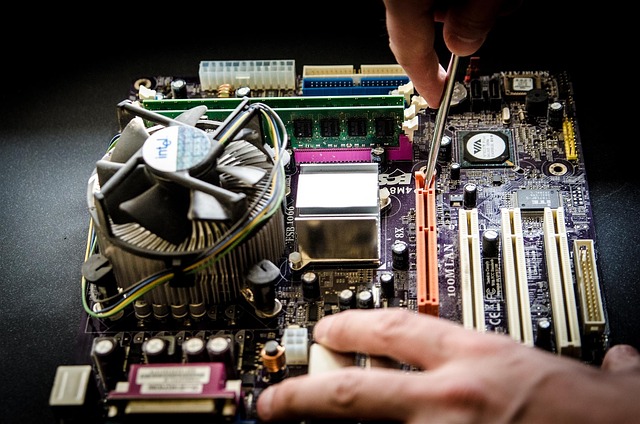
A visual inspection is often the first step in assessing a roof’s condition, and it involves a meticulous walk on the rooftop or utilizing advanced tools for remote assessment. During this process, professionals look out for various signs of damage or wear, such as missing or broken shingles, loose underlayment, damaged flashing, and corroded vents or gutters. These defects might be readily visible to the naked eye, but some issues require specialized equipment like infrared cameras to detect moisture intrusions or thermal anomalies hidden beneath the surface.
For comprehensive roof repair, identifying these problems early is key. Visual inspections enable roofing experts to pinpoint areas needing immediate attention and plan repairs or replacements accordingly. By combining traditional methods with modern technology, they can ensure that every inch of the rooftop is examined thoroughly, setting a solid foundation for effective and lasting roof repair solutions.
Common Roof Repairs: Steps and Tips
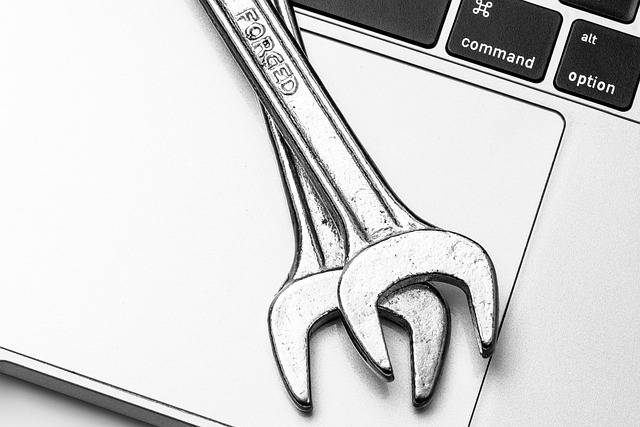
Roof repairs are a common necessity for homeowners, but understanding the process can be crucial in ensuring your peace of mind and the longevity of your roof. Common issues like missing or damaged shingles, leaks, and loose flashing are fixable with the right tools and knowledge.
When tackling these repairs, start by inspecting the roof from the ground using a pair of binoculars to spot any obvious problems. Next, climb up safely and inspect each section closely. For missing or broken shingles, use a hammer and nail set to replace them securely. Seal any leaks around chimneys or vents with caulk, and check the flashing for damage or loose connections, repairing as needed. Regular maintenance and prompt attention to these common issues can significantly extend your roof’s lifespan.
When to Call a Professional Roofing Expert

Roof issues can range from minor leaks and missing shingles to more severe structural damage. While some minor repairs can be tackled by homeowners, it’s crucial to know when to call in a professional roofing expert for roof repair. If you notice persistent or widespread problems like extensive water damage, mold growth, peeling or blistered shingles, or significant structural sagging, it’s time to seek expert assistance.
Professional roofing experts have the specialized knowledge and equipment to diagnose complex roof issues accurately. They can also ensure that any repairs are done safely and up-to-code, preventing further damage and costly mistakes. Regular inspections by these professionals can help catch potential problems early on, making repairs more manageable and less expensive.
Types of Roof Materials: Lifespan and Maintenance
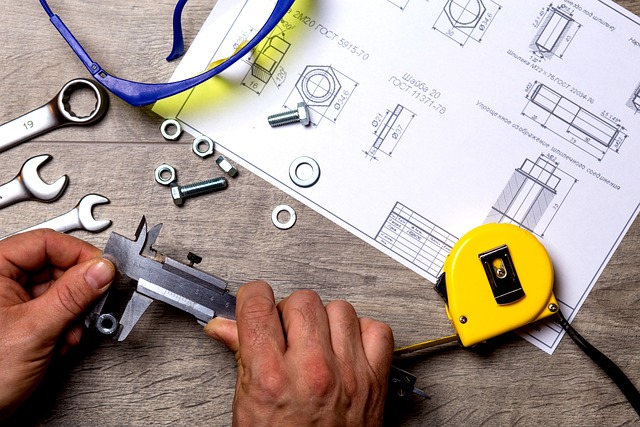
Roof materials play a significant role in determining the lifespan and maintenance requirements of your roof. Asphalt shingles are the most common choice due to their affordability and ease of installation, offering an average lifespan of 20-30 years with proper care. Clay or ceramic tiles, on the other hand, are known for their durability and aesthetic appeal, lasting up to 50 years or more but requiring specialized installation and more frequent cleaning to prevent degradation from moss or algae. Metal roofing is another durable option, often guaranteed for 50 years or more, and is particularly suitable for areas prone to heavy snow or rain due to its superior water resistance.
Regular maintenance is crucial for prolonging the life of any roof type. For asphalt shingles, annual inspections should suffice, focusing on replacing missing or damaged shingles and cleaning gutters. Clay or ceramic tiles may require more frequent cleaning to prevent buildup that can compromise their effectiveness. Metal roofs, while low-maintenance, still need occasional inspections for signs of rust or damage, as well as reapplication of coating to maintain protection against the elements. Timely roof repair, based on these maintenance routines, is essential in preserving your roof’s structural integrity and preventing more extensive – and costly – damage down the line.
Preventive Measures for Long-Lasting Roofs
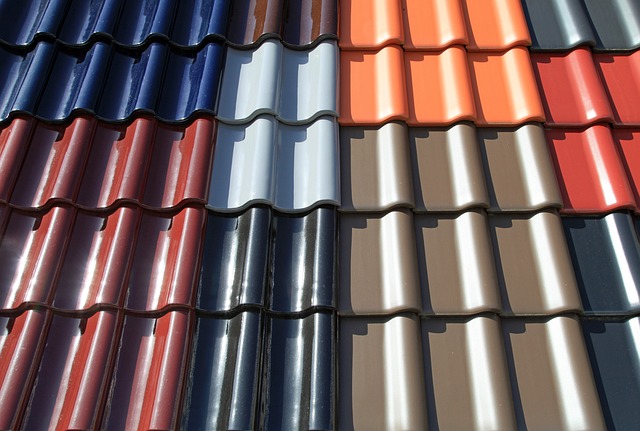
Regular maintenance is key to ensuring your roof’s longevity, which ultimately prevents costly and time-consuming roof repair. A good starting point is scheduling annual inspections by a professional. This allows for early detection of any issues, from missing shingles to loose flashing, before they escalate.
Beyond inspections, there are several preventive measures homeowners can take. These include keeping gutters clean to prevent water damage, sealing all vents and openings to the roof to stop pest intrusion, and applying a fresh coat of paint or sealant every few years to shield against weather elements. Additionally, being vigilant about fixing minor problems promptly can save you significant expenses in the long run, ensuring your roof remains in top condition.
Dealing with Emergency Roof Repairs
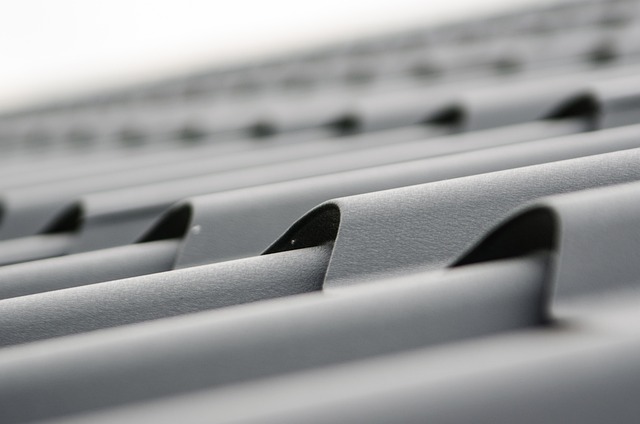
In the face of unexpected roof damage, immediate action is crucial for both structural integrity and preventing further complications. When an emergency roof repair is needed, time becomes your ally. The first step is to assess the extent of the damage—is it a minor leak or a severe storm-related breach? For minor issues, DIY kits can offer temporary solutions until a professional Roof Repair service arrives. However, for significant problems like missing shingles, structural weaknesses, or signs of water intrusion, don’t delay; contact experts promptly.
A swift response ensures that the repair is carried out correctly and prevents more severe and costly damage down the line. Emergency roof repairs often involve temporary fixes to shield your home from further weather exposure while a permanent solution is planned and executed. Remember, regular inspections can help identify potential issues early on, making emergency repairs less frequent and more manageable.
Cost Estimates: Budgeting for Roof Work
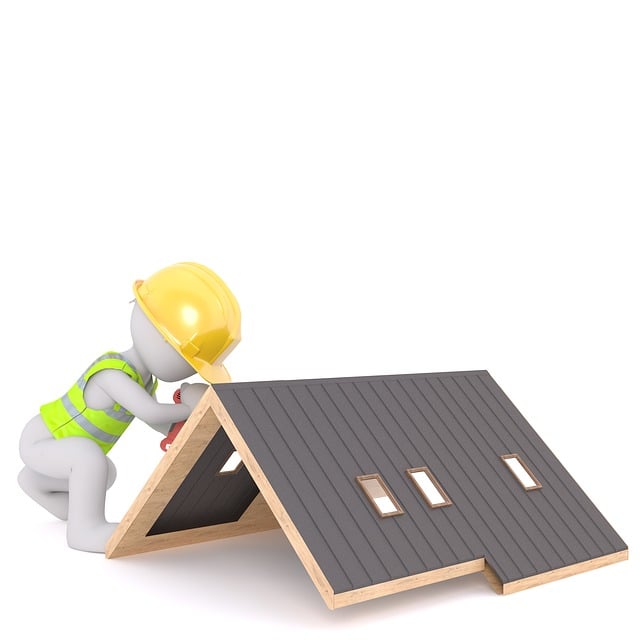
When it comes to roof repair, budgeting is a crucial step in the process. The cost estimates for roof work can vary widely depending on several factors such as the extent of damage, the type of roofing material, and the complexity of the fix. It’s essential to obtain multiple quotes from reputable contractors to get an accurate range.
Before starting any repairs, allocate a realistic budget that accounts for labor and materials. Keep in mind that preventative measures can also save you money in the long run by avoiding more extensive (and expensive) roof replacements. Regular inspections play a vital role in identifying potential issues early on, allowing for timely repairs and preserving your investment.
Post-Repair Maintenance Checklist

After completing roof repair, it’s crucial to establish a post-repair maintenance checklist to ensure longevity and prevent future issues. Regular inspection is key; check for any loose or damaged shingles, flashing, or vents at least twice annually. Look out for signs of leaks, mold growth, or structural damage caused by weather events like storms or strong winds.
In addition to visual checks, maintain proper ventilation by ensuring chimneys and vents are clear of debris and functioning optimally. Remove any accumulated leaves, branches, or other obstructions that could hinder airflow. Keep gutters clean and well-maintained, directing water away from your roof to avoid moisture-related problems.
